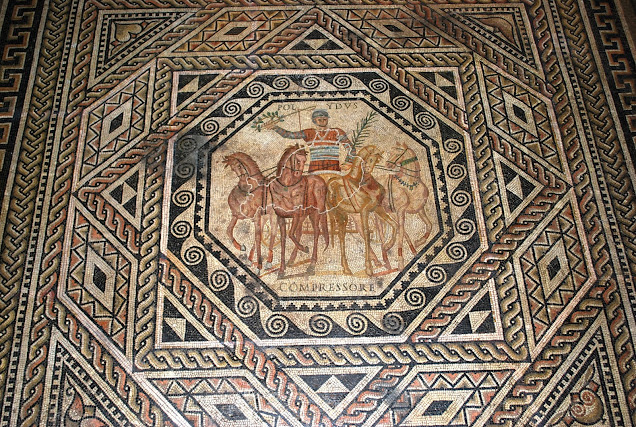Scythopolis or Beth She'an
Visiting Bet She’an by public transport is quite an achievement. Close to the Jordan border and north of the West Bank, it takes almost two hours from Nazareth to get to the premises. But the reward is stunning. Especially, with a severe sunstroke!

When Scythopolis, current Bet She’an, came under Roman rule in 63 BC, the city already had a remarkable track record of prosperity and political influence. Noteworthy are the many Biblical references, but it was also seat of the Egyptian occupation of Canaan, during the 16th to 12th century BC. Later it belonged to a group of ten Hellenistic city states – called Decapolis – that emerged around 175 BC. The choice of name, 'Scythopolis', was to stress the link with the Greek culture and the Greek God of wine Dionysus. According to Pliny the Elder, Dionysus founded the town, accompanied by his Scythian guards.Although the theater is remarkably well renovated, it also derives its fame from the great scenery modern visitors can enjoy, looking through the scaenae frons, towards the main collonaded street of Scythopolis. The theater could contain some 7,000 and was built during the second and third century. I measured the orchestra: it is 26,5 meters wide (excluding the intercourse, between the orchestra and the ima cavea) and 17 meters deep. So far, the biggest I have found in Israel. For Palestine, the theater of Nablus, although in very bad shape, is bigger.
 The scaenae frons comprised of (quote) "a central two-storey structure of white marble columns and two three-storey lateral structures or red granite columns." The entablatures atop of the column, as can be seen at the picture above, were made of marble quarried in Asia Minor and were richly carved with human figures and floral designs. If you want to see some more pictures, be my guest!
The scaenae frons comprised of (quote) "a central two-storey structure of white marble columns and two three-storey lateral structures or red granite columns." The entablatures atop of the column, as can be seen at the picture above, were made of marble quarried in Asia Minor and were richly carved with human figures and floral designs. If you want to see some more pictures, be my guest!


When Scythopolis, current Bet She’an, came under Roman rule in 63 BC, the city already had a remarkable track record of prosperity and political influence. Noteworthy are the many Biblical references, but it was also seat of the Egyptian occupation of Canaan, during the 16th to 12th century BC. Later it belonged to a group of ten Hellenistic city states – called Decapolis – that emerged around 175 BC. The choice of name, 'Scythopolis', was to stress the link with the Greek culture and the Greek God of wine Dionysus. According to Pliny the Elder, Dionysus founded the town, accompanied by his Scythian guards.Although the theater is remarkably well renovated, it also derives its fame from the great scenery modern visitors can enjoy, looking through the scaenae frons, towards the main collonaded street of Scythopolis. The theater could contain some 7,000 and was built during the second and third century. I measured the orchestra: it is 26,5 meters wide (excluding the intercourse, between the orchestra and the ima cavea) and 17 meters deep. So far, the biggest I have found in Israel. For Palestine, the theater of Nablus, although in very bad shape, is bigger.
 The scaenae frons comprised of (quote) "a central two-storey structure of white marble columns and two three-storey lateral structures or red granite columns." The entablatures atop of the column, as can be seen at the picture above, were made of marble quarried in Asia Minor and were richly carved with human figures and floral designs. If you want to see some more pictures, be my guest!
The scaenae frons comprised of (quote) "a central two-storey structure of white marble columns and two three-storey lateral structures or red granite columns." The entablatures atop of the column, as can be seen at the picture above, were made of marble quarried in Asia Minor and were richly carved with human figures and floral designs. If you want to see some more pictures, be my guest!



Reacties
Een reactie posten